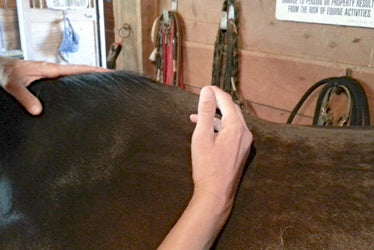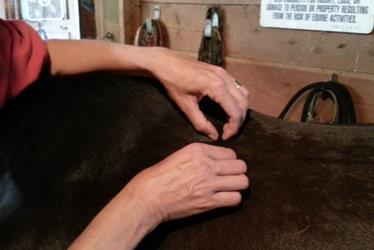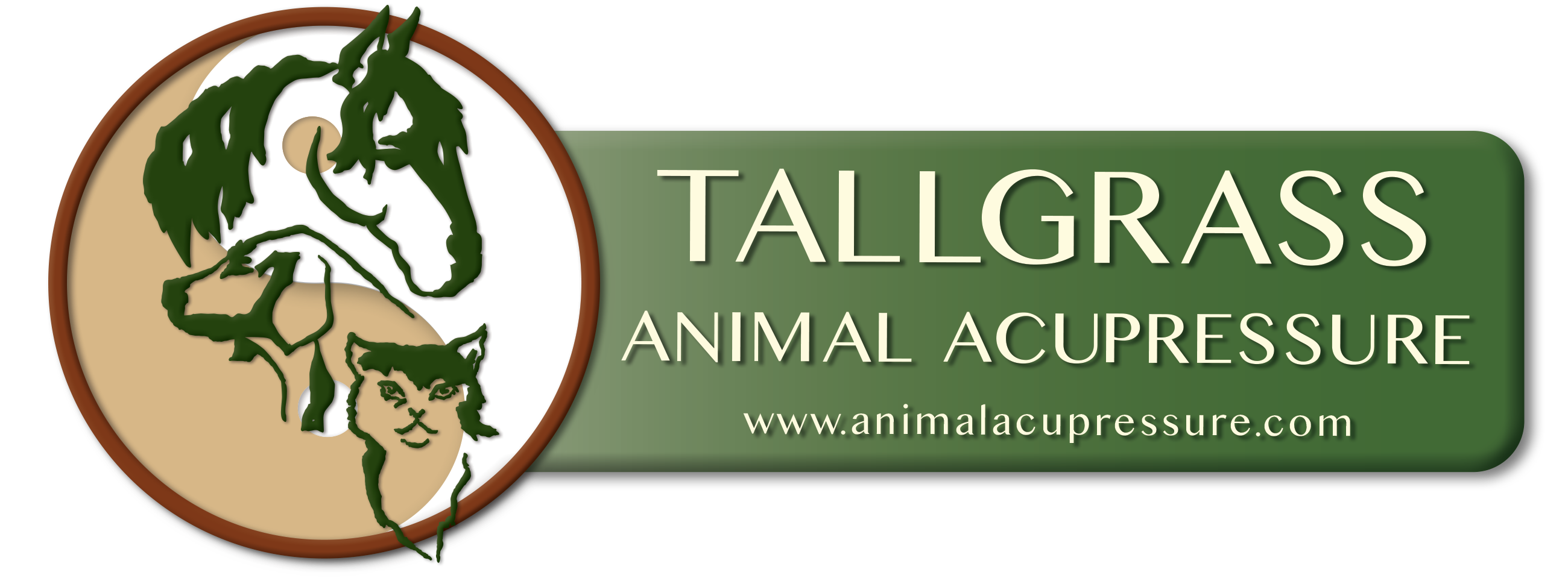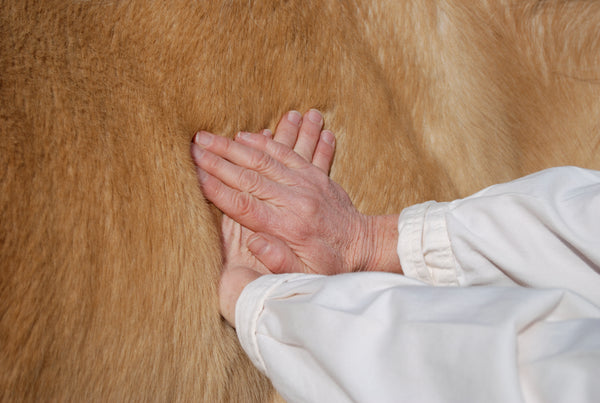By Kathi Soukup, Tallgrass Instructor and Equine and Small Animal Practitioner
Elmo, a 15 year old QH, has resided with us since he was 7. During the late summer of 2010 he presented with a severe allergic reaction. The reaction caused irritation to his airway, fluid in his lungs, and a Sunday emergency call to the Veterinarian. It was his first reaction, and went from a runny clear discharge and a dry cough to panic stricken horse with difficulty breathing in less than one hour.
He was treated and showed no symptoms until one week later. After the second episode, the attending veterinarian suggested allergy testing with the warning that he would most likely show allergies to everything in his environment, he was correct. Most of Elmo’s allergens were airborne, certain weeds/wildflowers and dust. Many were difficult to remove from an outdoor 24/7 horse’s environment. I noticed a pattern in when Elmo’s allergic reactions presented. When there was a strong south breeze, he would begin to show some minor symptoms (dry cough, clear discharge). A number of the allergens seemed to grow to the south side of his paddock, the neighboring woods, and our yard.
While it was suggested to put him on an antihistamine and decongestant, I chose a more holistic approach by managing his exposure to the known irritants and adding to his regular Acupressure sessions with specific Tui Na sessions. I also added several supplements and, on occasion, an herbal blend.
I perform the Tui Na routines weekly during his “allergy season” of late summer. The following is a Tui Na routine I've adapted from my training work on humans at East West Healing Arts Institute and its founder and instructor Dr Xiping Zhou MDOM, CMT, Lac
By paying attention to what triggers his symptoms, tweaking his diet, bi-monthly Acupressure sessions and the Tui Na routine he has maintained relatively symptom free the past two years.
General Tui Na Routine for Allergy Symptom Relief
- Gun Fa (rolling nuckles) the entire back area
- Tui Fa (pushing) up towards head along the Hua Tuo Jia Ji Meridian 3X (See Chart)
- Tui Fa (pushing) down towards the tail along the Bladder Meridian 3X
- Na Fa (skin pinch/grasp & roll) holding pinching on Hua Tuo Jia Ji and Bladder Meridians – grasp/pinch & roll for 1 second every 3rd count – roll, hold and gently pinch, repeat rhythmically along the meridians...
- Ji Fa (tap with finger) at LI 4 and Liv 3
- Ruo Fa (circular kneading) clockwise GV 20, GV 10, GV 9, GV 4, PC 6, St 36, Ki 1
- Ma Fa (wiping) followed by Ji Fa (cupping) at T6 (GV 10)
- Ma Fa (wiping) entire back
- Ji Fa (cupping) entire back


NOTE: (1) Other than GV pts. all techniques are performed bi-laterally.
(2) You can perform Na Fa on a horse’s back, go easy at first and with time you will be able to grasp more of the skin. A good place to practice the technique is along the neck.

